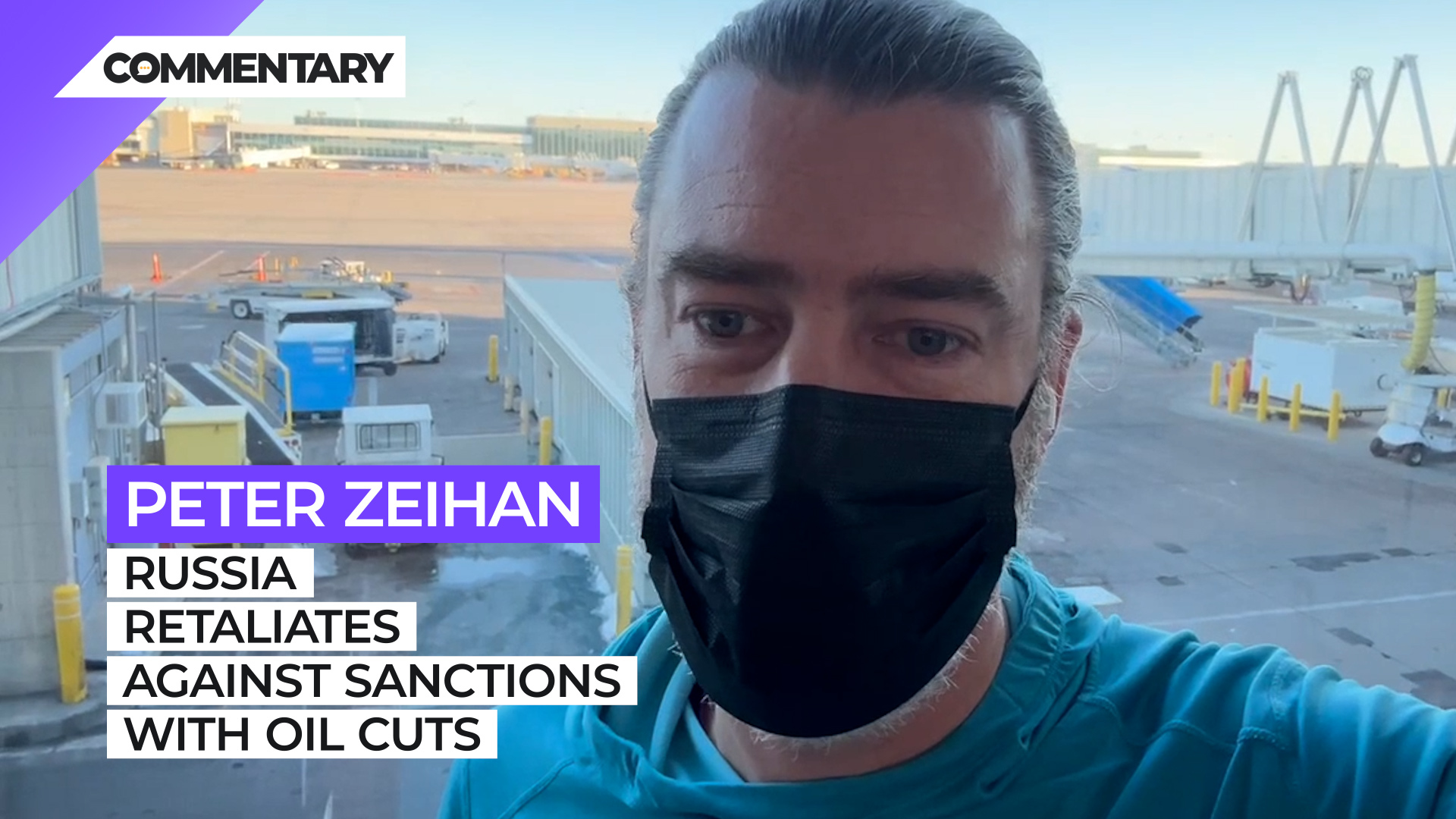
Commentary
-
Our commentary partners will help you reach your own conclusions on complex topics.
Hey everyone, Peter Zeihan here coming to you from my home away from home, the Denver Airport. It is the 13th of February and the news over the weekend is that the Russians have announced a near imminent plan to cut 500,000 barrels a day of oil production, which comes out to about one half of 1% of global production and only 10% of Russian exports. Now, for those of you who have been watching me for a while, you know that I’m really concerned about the stability of Russian production, not just because of the war, but because of their geology. Most oil production comes from the permafrost. And if there’s a situation where the crude can’t flow, whether because people aren’t taking the crude away at their export points, or because they shut it to themselves, the crude in the wellhead freezes into gel, and the water that comes up as a byproduct freezes into ice and it pops the wells from the inside and repairing that damage the last time around to 30 years.
And last time, most of the oil services firms were part of the process, this time they’re gone. So if we do lose Russian oil production for any reason, it’s not just gone, it’s gone for a very, very, very long time. And that is not priced into the market at all. Now, the 500,000 is probably not a problem. The Russians have about a million barrels per day from their western fields that are not in the permafrost. And so they can shut those in and bring that back on and shut it in again and bring it back online. In fact, they did this in the early weeks of the war last time when people weren’t taking their crude. Well, now we have a couple more things in play.
The European oil ban is in place, the European refined products ban is in place. It’s not technically illegal to buy or ship these products, but you have to do it without European insurance or vessels if it’s under a certain price point. And that is reducing demand for Russian product around the world because they’re having a hard time getting the stuff out. Also, the breakeven price for a lot of Russian crude is between 40 and $60 a barrel. And now that the prices that the Russians can charge are under that threshold, the Russians don’t have an economic incentive to pump the stuff in many cases. So 500,000 has taken away half of the buffer. We’re not to the point where we’re going to see permanent shut-ins but we are not all that far away. All right. That’s it for me. Until next time. Bye
-
What happens to China after Xi Jinping dies?
China is arguably the world’s second most powerful country, and its leader, General Secretary of the Chinese Communist Party (CCP) Xi Jinping, plays a major role in many of its economic and military decisions. So, with no heir apparent, what happens to China when Xi dies? Watch the above video as Straight Arrow News contributor… -
Impact of Italy’s older, shrinking population
Births in Italy fell by 3.6% in 2023, reaching a record low and raising concerns for Prime Minister Giorgia Meloni’s efforts to address the country’s aging population. One senator from Meloni’s ruling party echoed Pope Francis’ call for Italians to have more children, stating that having children should be Italian women’s “main mission.” Watch the… -
Biden and Trump are both unfit to be president
According to a June pre-debate poll, a majority of Americans feel dissatisfied with having to choose between either Joe Biden or Donald Trump. The debate did little to address anxieties that voters have about these two candidates. Post-debate polls indicate that President Biden now trails former President Trump, yet many voters remain undecided. Watch the… -
Why the West can’t quit Russian oil
Oil and gas revenues have been Russia’s most important source of income, accounting for up to half of the total Russian budget over the last decade. Despite severe sanctions imposed by the West to curb Russian energy income following the Russian invasion of Ukraine, Moscow’s oil revenues don’t seem to have been significantly affected. Watch… -
Why Israel’s Supreme Court ended draft exemptions
On Tuesday, June 25, Israel’s Supreme Court unanimously struck down a military draft exemption privilege for members of its ultra-Orthodox Jewish community. Israeli Prime Minister Benjamin Netanyahu relies on the support of two ultra-Orthodox parties to maintain power, both of which oppose the court ruling. The court held, in essence, that these military draft exemptions…
Popular Opinions
-
In addition to the facts, we believe it’s vital to hear perspectives from all sides of the political spectrum.
Latest Opinions
In addition to the facts, we believe it’s vital to hear perspectives from all sides of the political spectrum. We hope these different voices will help you reach your own conclusions.
The opinions published in this section are solely those of the contributors and do not reflect the views of Straight Arrow News.





















Latest Commentary
We know it is important to hear from a diverse range of observers on the complex topics we face and believe our commentary partners will help you reach your own conclusions.
The commentaries published in this section are solely those of the contributors and do not reflect the views of Straight Arrow News.
Peter Zeihan
Geopolitical StrategistImpact of Italy’s older, shrinking population
Biden and Trump are both unfit to be president
Why the West can’t quit Russian oil
Dr. Frank Luntz
Pollster and Political Analyst‘Two bad choices’: Undecided voters before Biden-Trump debate
‘Money doesn’t go as far’: Americans discuss financial hardships
‘I am shocked’: Americans react to the Trump guilty verdict
Pete Ricketts
U.S. Senator for Nebraska